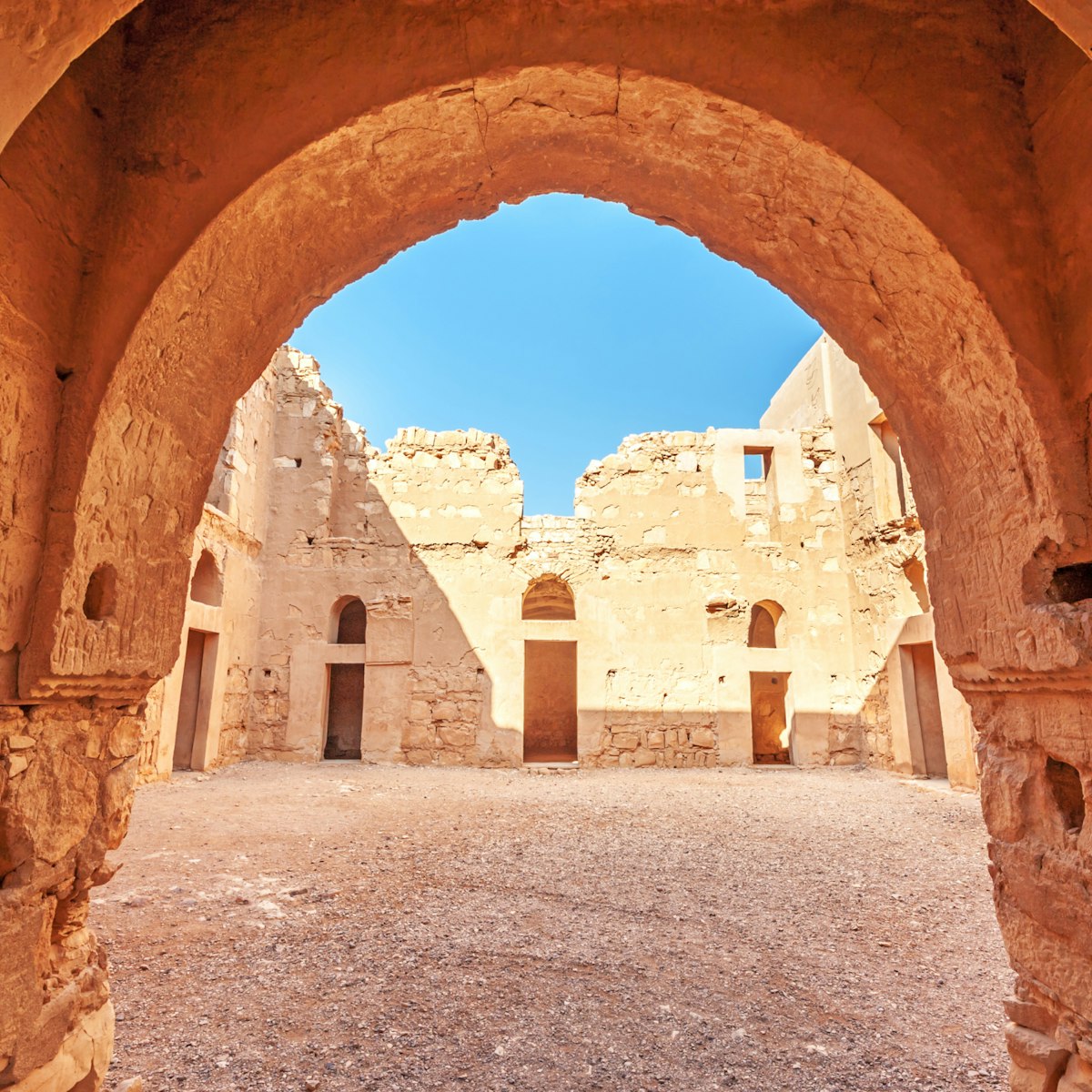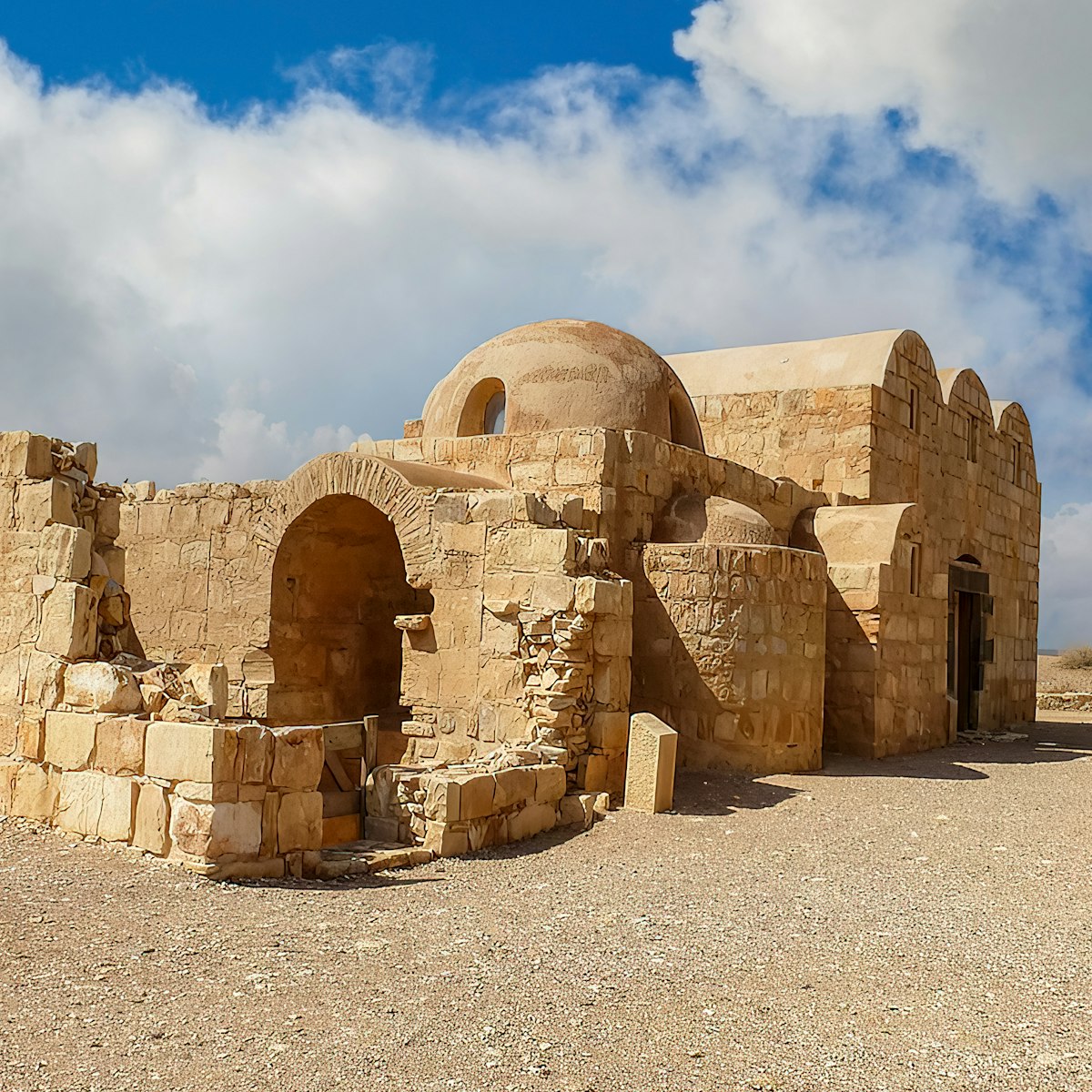With a fair proportion of masonry still standing, some beautifully restored archways and a desolate perch on the edge of the Eastern Desert, this fort is a good introduction to the history of the region. Hallabat once boasted elaborate baths, intricate frescoes and mosaics, a mosque and several reservoirs, and served as a focus for a thriving farming community. Restoration of a substantial part of the site under Spanish direction has restored an inkling of the castle’s former stature.
As with all the castles in Jordan, it takes a bit of sleuthing to peel back the layers of history. In the case of Hallabat, you need only focus on three main eras – Roman, Byzantine and Umayyad.
Look first for a fine mosaic. This sits above a large central cistern and the ruins of the original fort. Built by the Romans during the reign of Emperor Caracalla (AD 198–217), the fort, like many in the region, was originally built as a defence against raiding desert tribes. As you survey the land from the castle hill, you can see why they picked this location, as it would have been easy to spot men on horseback darting across the rocky plain.
Now look for additions in basaltic rock, easily distinguished by its black colour. If you venture further into the Eastern Desert, you’ll find this volcanic rock scattered across vast plains providing a ready supply of building materials. In the 6th century the fort was converted by the Byzantines into a monastery for a short period, using the basalt blocks to expand the Roman structure.
Lastly, admire the decorated finesse of limestone walls (distinguished by their white colour), carved niches, reassembled arches and an elaborate porch with pillars. This is the work of the Umayyads (AD 661–750) who revisited the structure under the reign of the hedonistic caliph Walid II and transformed the modest fort into an imposing three-storey complex with four large towers. Look for the remains of a large mosque with cusped arches, an agricultural enclosure fed by an elaborate irrigation system and the ruins of a village for palace servants that were included in the Umayyads' ambitious expansion project. Wondering where the baths are? You’ll have to travel 3km east to see the remains of these, at Hammam As Sarah.







